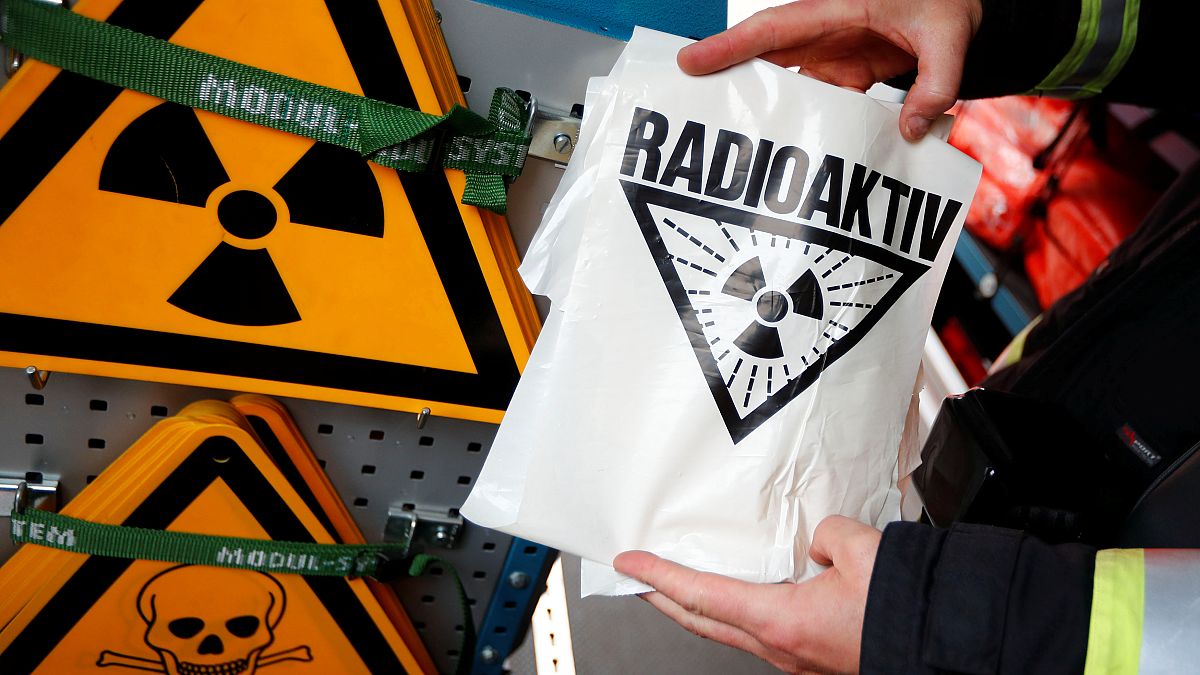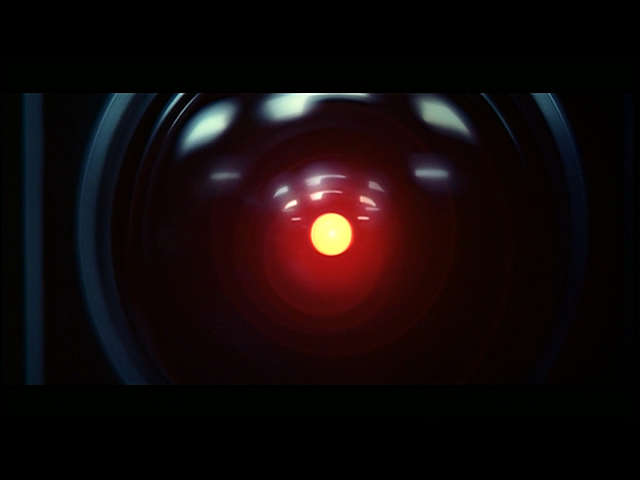It’s a nice thought experiment, but absolutely pointless.
Any warning about an unknown-to-us danger that is even just 500 years old or from a different culture is being treated like a superstition by us.A good example of this would be the Yei River in South Sudan (and other areas along the equator) where the local tribes traditionally didn’t settle near the river because the river spirits didn’t allow it and brought misfortune and sickness to those who didn’t respect them.
Modern settlers disregarded that because it’s clearly unscientific, and rivers are great for trade and transportation.
And then the people living near the rivers started going blind, their children suffered from constant seizures and stunted development, and we still don’t have a cure.Don’t you actually make a very good point for this effort?
The problem with the superstitious warning was exactly that it was aimed only at the people of the time. It had no way to preserve it’s warning beyond cultural and intellectual changes. Same as the radioactive symbol having too little inherent deterrent in its design so it caused radiation incidents by people who did not know what it means so we designed a new one that’s specifically meant to be intuitively “dangerous” to people without any prior knowledge.
So in a similar way, we need to have a way to create warnings about nuclear waste - or a river - that are not limited by the current generation and the way they understand signs and meanings.
Still worth the effort to try imo.
Thats just proof that we have designed systems to pass this knowledge down through time and cultures, and can improve on it to be more resiliant to shifts in culture and time going forward.
Comparing modern civilization to tribes doesn’t make sense. We have computers, digital storage, steel, and many other things that will let us preserve and share knowledge in a way humans throughout history probably couldn’t even dream of.
YouTube video by Kyle Hill on how we currently store waste for anyone interested. [18:14] https://youtu.be/4aUODXeAM-k?si=
That’s a fantastic video and more people need to watch it!
The biggest take away that people who don’t feel like watching should know is that 99% of all nuclear waste actually decays to a completely inert state in 31 years or less. Plus, the amount of nuclear fuel used in every nuclear plant in the entire world since the beginning is a tiny, tiny amount and only about 1% of that will be potentially dangerous longer than 31 years. The 1% of spent fuel that is dangerous long-term could easily be stored in probably just one single deep storage facility where it’s stored safely kilometers under the Earth’s crust in a geologically stable region forever.
Storage of nuclear waste is a solved problem. The only thing holding the experts back from doing the correct thing with nuclear waste is public perception and unfounded laws forbidding it because of propaganda and scare tactics. There has NEVER been a single incident relating to improper storage of nuclear materials. But there have been loads and loads of incidents involving improper storage of oil, gas, and coal materials.
Nuclear is so, so, SO much safer and cleaner than oil, gas, and coal.
NIMBYs and coal ash spills… Chernobyl is what caused a ton of this propaganda…
Probably a fair bit of pro-oil lobbying as well to get the hippies to protest nuclear for the environment instead of the oil industry.
Here is an alternative Piped link(s):
https://piped.video/4aUODXeAM-k?si=
Piped is a privacy-respecting open-source alternative frontend to YouTube.
I’m open-source; check me out at GitHub.
The idea here are very interesting to read, but I think I’m leaning most favorably towards the last group’s idea to bury it with as little marking as possible. The plans modeled on Stonehenge seem odd to me. Stonehenge is famously a monument whose origin and purpose was a mystery, and that mystery enticed people from all over the world to travel to the site and excavate it. It seems more like a good reference for a method that would not work. How many people would have toyed around at Stonehenge if the monument weren’t there?
At the same time, we have events with contaminated materials being used in construction within a matter of months or years, so it’s not like these are abstract problems. E.g., look at the 1983 Ciudad Juárez Cobalt 60 incident. We have the technology to identify contaminated materials, but we’d only use them if we have reason to believe we should. It’s probably fair to assume the same of future societies, so it makes sense to want to make sure they have reason to believe they should test the area.
Man… Article from 2018 and they still thought we’d eventually have another ice age… how the times change fast…
After the nuclear winter we’ll have an ice age.
In 100,000 years, you very well might be in an ice age period. The global warming trend only took 50 years to appear.
deleted by creator
I am persistently mystified that so many people – many calling themselves “green” or environmentalist – consider this a solved problem.
Spent nuclear fuel piles up in retaining pools at nuclear reactor sites, and we can’t take it anywhere because nobody can figure out where to put it. Everybody has easy answers and a proper & permanent disposal site and method are always “just around the corner”.
Meanwhile, solar and wind – for all of their problems – can meet large portions of our energy needs RIGHT NOW with minimal capital outlay to install new capacity.
Spent nuclear fuel is absolutely an environmental hazard, but nuclear power is kinda the least-worst option for managing base load right now.
Practical fusion is decades away still, and while solar and wind are great, electrical grids don’t function unless they can exactly meet electrical demand 100% of the time. You need something that can rapidly scale up and down on demand, regardless of time of day or inclement weather, otherwise one good winter storm and everyone loses their heating (assuming you’ve managed to transition off gas and on to electrical heating). If nuclear is out then your other options are hydro (required very specific geography and has its own environmental impact) or gas/oil/coal.
You can make solar/wind more practical by using grid-scale storage, but the amount of grid storage required to fully decarbonise the grid world-wide just isn’t practical unless you can generate significant amounts of power through other means.
Personally, my hope is for a zero-carbon electrical grid in my lifetime. Ideally that won’t involve nuclear, but if the choice is nuclear or carbon I’ll take nuclear.
if the choice is nuclear or carbon I’ll take nuclear
I’m totally with you on that.
Ah, baseload, the old saw. Worked really well in France last year, didn’t it? Do you think there will be fewer droughts in the future?
Nuclear waste management is a solved problem, conceptually it is quite simple and elegant.
You litterarly just dig a hole, put the waste there and fill the hole in.
Practially you need to dig a deep hole in stable bedrock, put the spent fuel in special fuel containers which are put in the hole, which is backfilled.
Here in Scandinavia we have stable bedrock and technology to drill into it, I have for several years asked myself why we don’t get into the international nuclear waste management business, nuclear waste takes up a surprisingly small ammount of physical space, so Sweden, Finland and Norway could just build one facility each and start selling space in them to other nations.
I have also thought about using the waste to boost geothermal power, spent nuclear fuel will still generate a bit of heat, so run geothermal loops around the main tunnel, I realize that the ammount of heat generated by the spent fuel would be limited, but it would still be there and with geothermal heat pumps we can use the extra heat energy to safely heat houses.
I would have zero issues with it if the government decided to build a spent nuclear fuel permanent storage site in my small town.
Please note however, I only see nuclear power as an interim solution, something that will power us through the next 100-150 years, and quickly phase out fossil fuel power generation, while we buy ourselves time to build sustainable power generation that works.
My response:
Everybody has easy answers and a proper & permanent disposal site and method are always “just around the corner”.
I did mention that I was talking about a practical solution, not a political one.
Practically, this is a fairly simple solution, poltically, it is a mess, a mess driven by unfounded fears and demands for unrealistic threat mitigation.
The fact that we are looking into how to warn a civilization 100 000 years in the future might be admirable, but it is a ridiculous stopping point.
Current plan is to build a storage site 500m in the bedrock, fill the site with waste, and backfill the site, then seal it and leave it.
This is fine.
Any society capable of drilling 500m into the bedrock can be assumed to have knowledge of radiation, so they would detect the material as being dangerous and act accordingly.
In the case I am wrong, and a society has zero idea of radiation yet manage to get to the site, it would quickly be abandoned as the society figure out that going down there makes people sick, if they have religion it would probably classify the site as cursed and forbid their members from going down there.
It is fine.
Let’s focus on our current problems first, with the current storage system, that being pepetual temporary storage, it is certain that shit will leak into an active environment sooner or later without maintenance, a far worse problem than if we set up an underground permanent storage site.
And the amount of uranium available would only get us through to the end of the century.
Some countries successfully dismantle the remnants of the rods. Residues are extracted from spent nuclear fuel and rods are made not on uranium but on plutonium. The remmans of this rods is even more enriched than before reaktor starting work. as a result, it is possible to burn unenriched uranium and other heavy nuclei, so that the fuel will definitely last for a long time.
“[Nuclear] is costly, potentially dangerous, that there are problems dealing with and siting waste, and that future generations are left with a legacy they will not appreciate. …uranium is itself a non-renewable resource, due to run out well before the end of this century. So even if it were to be cost-effective, safe, and harmless to future generations, nuclear energy is not a long-term solution to humanity’s energy problems.”
Dobson, Andrew, (2000) GREEN POLITICAL THOUGHT, United Kingdom: Taylor and Francis (Books) Limited, pp.56
Standard green party retoric, they don’t see the forest for the trees.
If we had built nuclear power plants and closed coal, oil and gas power plants back in 2000 we would have several nations with a carbon free grid these days.
I don’t think Dobson is out to mislead people from an academic point-of-view, so I take the uranium comment as being true. If it is the case, then I’m not sure how you had better insight into the future of nuclear power.
Read their arguments above. Also, is it this Andrew Dobson? An academic but hardly an expert on the nuclear physics.
Oh, if only the reactors worked exclusively on uranium. Of course, I can quote Rosatom’s articles, but unfortunately they are only in Russian. A closed fuel cycle was developed there back in 2015. If you want you can use Google translate: https://habr.com/ru/articles/388533/
P.S. It is very specific to get scientific knowledge from a book called GREEN POLITICAL THOUGHT
Thanks, I’ll check it out, Google Translate usually works well on links.
Edit: tried reading it, got about half of it. How long is this closed-loop supposed to last until it is all spent? I didn’t see mentions of that, just about uranium no longer being an issue.
I quoted that as I’m currently reading through it as part of my master’s and it seemed particularly relevant. Dobson looks at different aspects from different perspectives, not taking particular sides. The quote above is from the ‘greens’ perspective; Dobson mentions the possibility of future technological advances.
At the beginning of the article, it is mentioned that only the use of uranium-238, which is now not used, will expand the reserves of nuclear fuel by about 200 times.
UPD: also in another article I read that not all uranium is completely destroyed in the reactor cycle, the rest turns into radioactive waste, which in a few years can be cooled and recycled into new rods for the reactor. in France, for example, they have been doing this for a long time. Here: https://habr.com/ru/articles/588877/
Just throw it in a subduction rift, give the earth a yummy snack
I always wonder how much of the nuclear fanboyism on social media is actually astroturfing. I suspect it’s the majority. While there surely are some genuinely misguided people out there the sheer amount of bullshit you get thrown at you whenever you say anything critical of nuclear technology is just insane.
I am not sure why you are talking about climate variations: none of these projects happen at the surface or close to it. The sites are selected to be geologically stable over millions of years, so climate will have no effect on them.
Also, the 100,000 years is the design requirement for current nuclear waste to reach natural uranium toxicity. There are two important consequences from that: since radioactivity reduces exponentially, this means that at around 10,000 years you are already at ~10x higher than natural uranium (down from 1000x for fresh nuclear waste) and the risk is already much lower as 99% of the process is done already. Also, these values are for the current way the waste has been treated. If you use the DIAMEX process, your 100,000 years becomes 500-1000 years (yes, that’s not a typo).
That’s also part of why these projects move slowly at the moment. The current options work but we are developing solutions that are much better - why build a 100,000 years facility when you can build a 1000 year facility, or even use some of this waste in a 4th gen plant? The main reason these move slowly is that heat management is the biggest issue on the storage, and the first phase for these projects is surface storage for 60-80 years for a first cooling phase.
Humans have been around for 1.6 or so million years.











